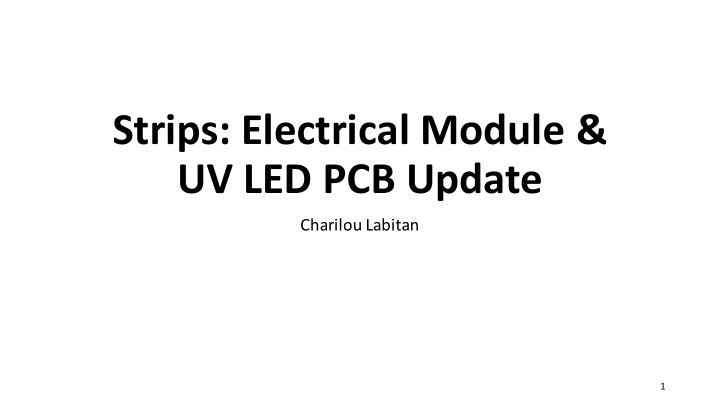



Strips: Electrical Module & UV LED PCB Update Charilou Labitan 1
Update on the Electrical Module Tom-Erik left after making the first electrical module. Next steps… Needed to make sure all the • wire bonds and connections are correct. Started to use the DAQ and • see how well it’s working. 2
One problem with our connections when assembling: Originally we soldered the HVret and LV GND together at the test frame connector. I talked to Craig and found out we should have connected on the other side of the filter. 3
We soldered a wire between the HVret via and a pad connecting to LVret. Other solutions: Peter – Scraped green solder resist near the top pad of R8 and fitted a 0R 0603 resistor across the gap. Ashley – On the hybrid, connected LVretand HVretlocally as close to the front-end as possible. -- According to Craig, these connections will be unnecessary on the AMAC v1 compatible frames. 4
Using the DAQ Able to capture chips… once in a while. Working on making the results more consistent. Work in progress. 5
PCB Design for UV LEDs Glasgow made a flex design for the UV LEDs and sent out a limited number of them to the collaboration. (We and Santa Cruz only received one each.) Problem Flex is prone to bowing • LEDs are ‘squishy’ – can only touch • the flex when mounting it to a curing jig 6
Solution: Make our own! With help from Timon and John Joseph (Engineering), I learned how to use KiCad and make a PCB Design. Schematic based on Glasgow’s flex design. 7
Similar to Flex Different than Flex • 95mm x 4mm Has bottom copper plate; almost as large as • • 10 LED Pads PCB (mask slightly smaller than b. copper) 5 vias connecting each LED pad to b. copper • 8
9
Next Steps… • Doubling the number of LEDs – More flux, better cure • More effective heat transfer: Number of vias versus size of the vias? 10
Recommend
More recommend